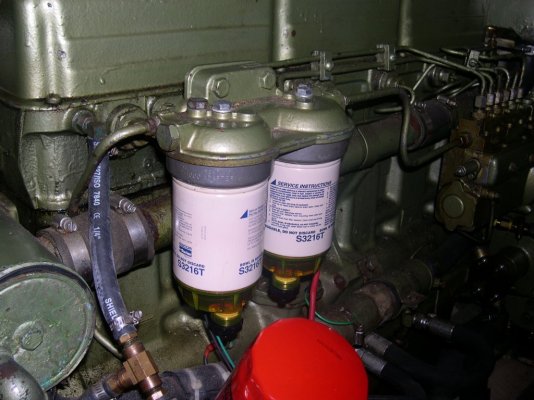rgano
Guru
- Joined
- Oct 8, 2007
- Messages
- 5,203
- Location
- Panama City area
- Vessel Name
- FROLIC
- Vessel Make
- Mainship 30 Pilot II since 2015. GB-42 1986-2015. Former Unlimited Tonnage Master
Looking over my old maintenance records, I noticed that on 21 October 1989 an oil sample revealed >2% fuel dilution in the port engine. I think that sample was taken after I noticed a slight rise in the level on the dipstick. Over the next three days I put new copper washers on the six injector banjo connections, tested all six injectors, replaced the injector pump, and put new rubber washers on the injector inlet adapters on the side of the engine and hoped for the best. In November the generator also exhibited fuel dilution on its lube oil (resolved with new lift pump), and in February 1990 the PORT Lehman 120 oil sample reported >1% fuel dilution (number 6 injector banjo connection leaking). However, my stbd engine continued to show fuel dilution, but it was getting toward time to load the boat onto the trailer taking it from San Diego to Galveston and thence on its own bottom to Panama City, FL after my military retirement. So, I loaded up a lot of oil and filters to cover numerous oil changes during the 560-mile run to PC from Galveston. Finally, in June 1990, I was told to connect a bicycle pump with an integral check valve to the return fuel line connection at the back end on the engine's head and pressurize the system to a few pounds. With the valve cover off, it was just a few seconds before I spied bubbles coming up through the top of the number 2 injector - the pop test in October had not revealed this low pressure leak. Problem finally solved with a rebuild of that one. Only took eight months to fine that one. After that rash of dilution issues until 2015 when I sold the boat, I never had another fuel dilution issue, but I was truly sensitized to the issue after that!

 Fortunately we didn’t get into a run away engine situation.
Fortunately we didn’t get into a run away engine situation.
